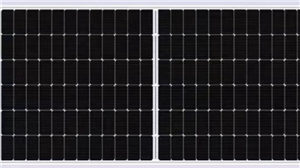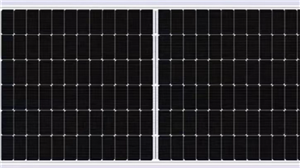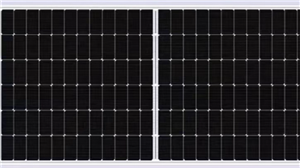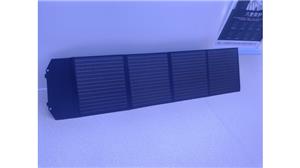Activity board houses
From the perspective of materials and structure, the core components of prefabricated houses are usually composed of steel structural frames and enclosure panels. Steel structure frames are often made of high-quality steel, such as light steel joists, which have the advantages of light weight, high strength, and corrosion resistance, and can provide stable support for prefabricated houses; There are various types of enclosure panels, including color steel sandwich panels, rock wool sandwich panels, polyurethane sandwich panels, etc. These panels are not only easy to install, but also can meet different insulation, fire prevention, and sound insulation performance requirements according to needs. The various components of the prefabricated house are produced in the factory with a high degree of standardization. Only bolts and other connecting parts need to be assembled on site, greatly shortening the construction period. Generally, a movable house project of several hundred square meters can be completed and put into use within a few days to ten days.
In terms of applicable scenarios, the flexibility of activity board houses makes their application range very wide. In the field of engineering construction, it is often used as a dormitory, office, conference room, material warehouse, etc. for construction personnel, providing basic guarantee for the smooth progress of engineering projects; In emergency rescue scenarios, such as earthquakes, floods, typhoons and other natural disasters, prefabricated houses can be quickly built as temporary shelters to provide shelter from wind and rain for the affected people. They can also serve as temporary medical points and material distribution stations to assist in the orderly development of disaster relief work; In addition, during temporary events such as large-scale competitions, exhibitions, and celebrations, activity board houses can be used as temporary rest areas, service stations, ticket booths, etc; In the construction of temporary offices, teaching support points, and medical stations in some remote areas, prefabricated houses have also become the preferred choice due to their low cost and easy construction advantages.
Activity board houses also have many significant advantages. In addition to the fast construction speed and relatively low cost mentioned earlier, it also has the characteristics of reusability and strong mobility. When the project is completed or the usage requirements change, the prefabricated houses can be disassembled and the components can be transported to a new location for reassembly, reducing the generation of construction waste and complying with the concept of green environmental protection; At the same time, its internal space can be flexibly divided according to actual needs, and facilities such as doors, windows, water and electricity, and air conditioning can be installed to meet different functional requirements, ensuring good comfort.
However, there are also some things to pay attention to when using prefabricated houses. For example, appropriate plates and reinforcement measures should be selected according to the local climate conditions to cope with extreme weather such as strong wind, rainstorm and snowstorm; During use, attention should be paid to fire safety and avoid the illegal use of open flames, high-power electrical appliances, etc. in the board room.
Overall, prefabricated houses play an irreplaceable role in meeting temporary construction needs, responding to emergency situations, and reducing construction costs due to their unique advantages. With the continuous development of material technology and construction techniques, their performance and application scenarios will further expand.
In terms of applicable scenarios, the flexibility of activity board houses makes their application range very wide. In the field of engineering construction, it is often used as a dormitory, office, conference room, material warehouse, etc. for construction personnel, providing basic guarantee for the smooth progress of engineering projects; In emergency rescue scenarios, such as earthquakes, floods, typhoons and other natural disasters, prefabricated houses can be quickly built as temporary shelters to provide shelter from wind and rain for the affected people. They can also serve as temporary medical points and material distribution stations to assist in the orderly development of disaster relief work; In addition, during temporary events such as large-scale competitions, exhibitions, and celebrations, activity board houses can be used as temporary rest areas, service stations, ticket booths, etc; In the construction of temporary offices, teaching support points, and medical stations in some remote areas, prefabricated houses have also become the preferred choice due to their low cost and easy construction advantages.
Activity board houses also have many significant advantages. In addition to the fast construction speed and relatively low cost mentioned earlier, it also has the characteristics of reusability and strong mobility. When the project is completed or the usage requirements change, the prefabricated houses can be disassembled and the components can be transported to a new location for reassembly, reducing the generation of construction waste and complying with the concept of green environmental protection; At the same time, its internal space can be flexibly divided according to actual needs, and facilities such as doors, windows, water and electricity, and air conditioning can be installed to meet different functional requirements, ensuring good comfort.
However, there are also some things to pay attention to when using prefabricated houses. For example, appropriate plates and reinforcement measures should be selected according to the local climate conditions to cope with extreme weather such as strong wind, rainstorm and snowstorm; During use, attention should be paid to fire safety and avoid the illegal use of open flames, high-power electrical appliances, etc. in the board room.
Overall, prefabricated houses play an irreplaceable role in meeting temporary construction needs, responding to emergency situations, and reducing construction costs due to their unique advantages. With the continuous development of material technology and construction techniques, their performance and application scenarios will further expand.




